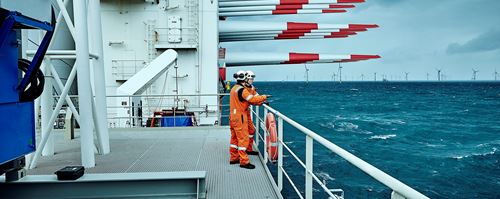Clear and sustainable advantages
At Fred. Olsen Windcarrier, achieving our sustainability goals is something we take very seriously, as we have detailed in our ESG report. This is why we have committed to implementing shore power capabilities on two of our jack-up vessels, Brave Tern and Bold Tern, by the end of 2022, with Blue Tern following at earliest opportunity.
We are also in discussion with our customers about the advantages of shore power, which is something they are becoming increasingly aware of and interested in as part of the tender process. These businesses have their own sustainability targets to meet to satisfy environmental regulations, their own objectives and customer demands, and so this represents a very attractive solution.
And the advantages of shore power are certainly significant! A vessel such as ours typically uses approximately five tons of diesel oil per day when idle in port. Not only is this expensive in terms of fuel, but running auxiliary engines also uses lubrication oil and results in inevitable wear over time. Shore power would therefore save both in fuel, oil, and maintenance costs.
Running these engines also results in 15.8 tonnes of CO2 emissions per day (based on the consumption of 5 tonnes of fuel), which has a direct impact on the environment and can affect the air quality for the crew and for local residents. In addition, the engines also create noise pollution, which if turned off would give a far more pleasant experience for people both on board and on shore (as well as for surrounding wildlife).
Shore power can also help ports to improve their environmental profile and offer an additional source of income. While this new power supply will of course be a new cost for vessel operators, and may vary from port to port, it would always be a cheaper option compared to burning fuel.
